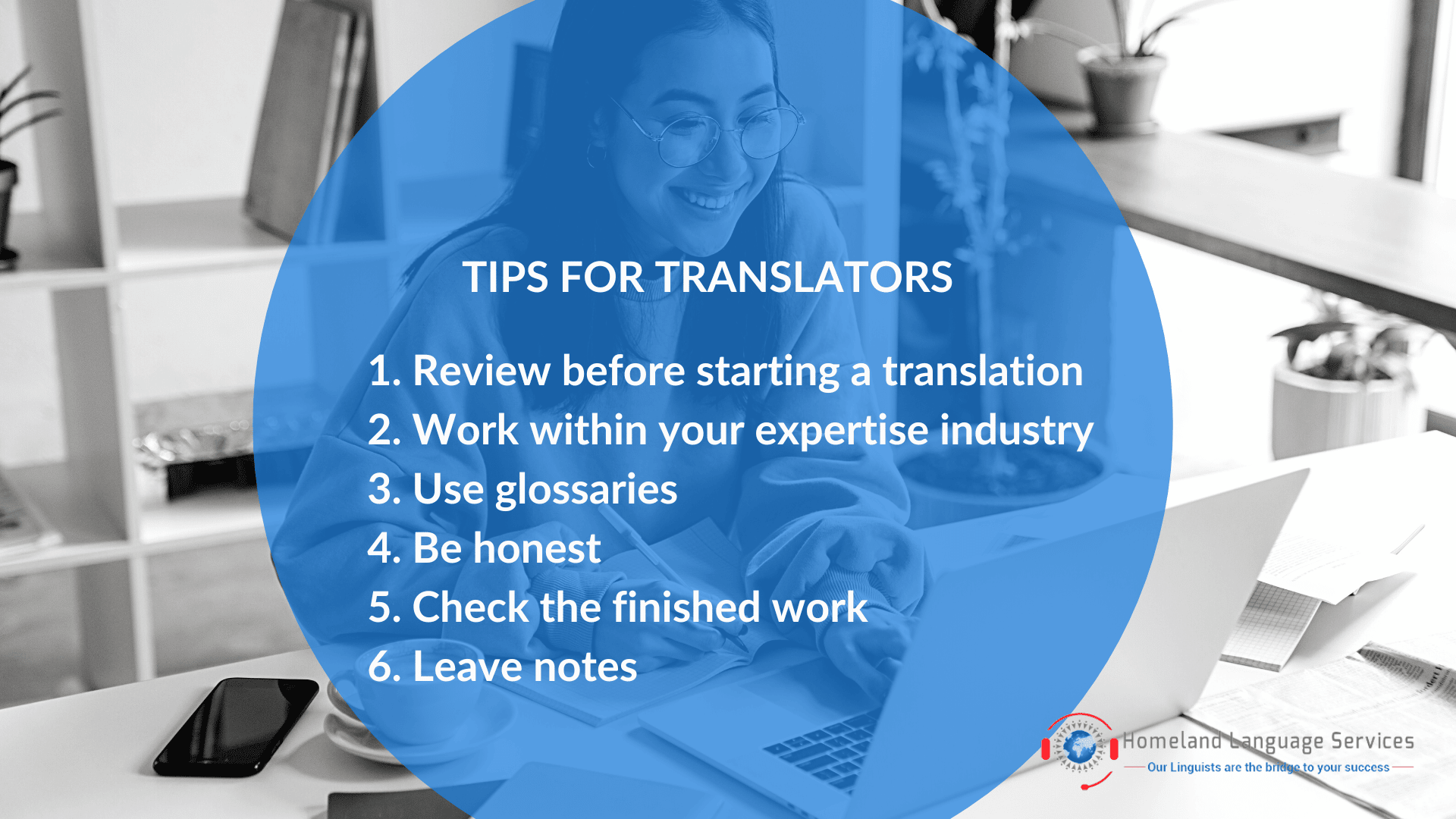Homeland Language Services’ translators have enormous experience working with different types of texts. With their help, we gathered some tips and advice for novice or freelance translators to become successful in their job.
Any professional translator can’t be excused from learning to use new tools and studying new techniques to provide better translations. In Homeland Language Services the translation process involves several stages that freelance translators are often not aware of.
There is much more to translation than simply typing in a foreign language and using CAT tools or translation memory tools. A professional translation service typically requires both a revision (or edition) and proofreading. These are two essential stages that need to take place before we can say that a document is ready to be delivered to the client.
In other words, the professional translation service includes the Quality Control stage in the process. The final text is read (or proofread) additionally before sending it to the client. Of course, we have a team for this, that’s why one document is translated and checked by several specialists. If you are a freelancer, you should implement the quality control stage in your working process. You should never send a project to your client without additional checks and reading it beforehand.
Nevertheless, it is not the only piece of advice we want to share with you. Familiarize the following list:
- 1. Review the document or files before starting a translation and check all the requirements from the client. Make sure that you received the right copies before starting translation.
- 2. Work with the texts from your expertise industry. This way you can guarantee the quality of the translation. If you don’t specialize in the topic of a proposed project, think twice before agreeing on this job.
- 3. Check the file format. Generally, files should be sent in a translation-friendly format with a translation memory. Also, don’t change the CAT tool, if the client specified it. By doing this you will save time and money using a tool that gives full compatibility with the initial formatting.
- 4. Try to use glossaries, style guides, and terminology databases as much as possible. Sometimes, clients can send you a glossary or database together with material for translation. Use it! You can import it into a CAT tool and use the right terminology.
- 5. Be honest. You should ask all questions, evaluate the deadline, and set and confirm the price before starting to provide translation service.
- 6. Check your finished translation against the source for missing text or formatting issues.
- 7. Check your finished translation (yes, once again). You should proofread it by yourself if you are a freelancer. If you work together with the editor, forward the project to him/her.
- 8. Leave notes or comments for the client or editor. When you send the final version of the material, write a shorе accompanying letter. Even if there were no issues to mention, write that the process went smoothly. Clients appreciate it when you pay attention and show your concern about the project.








